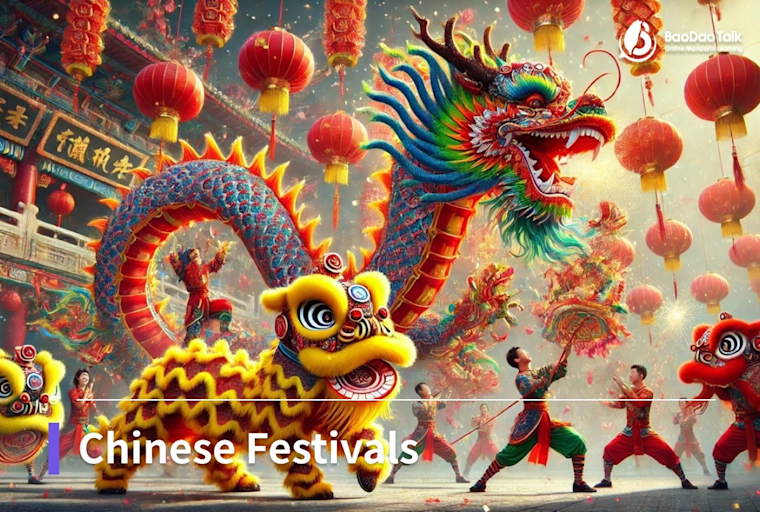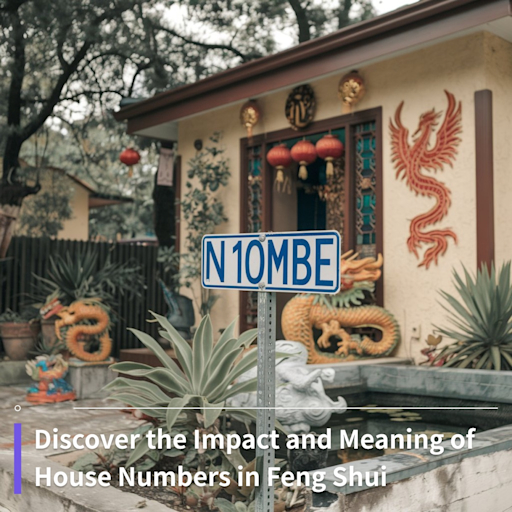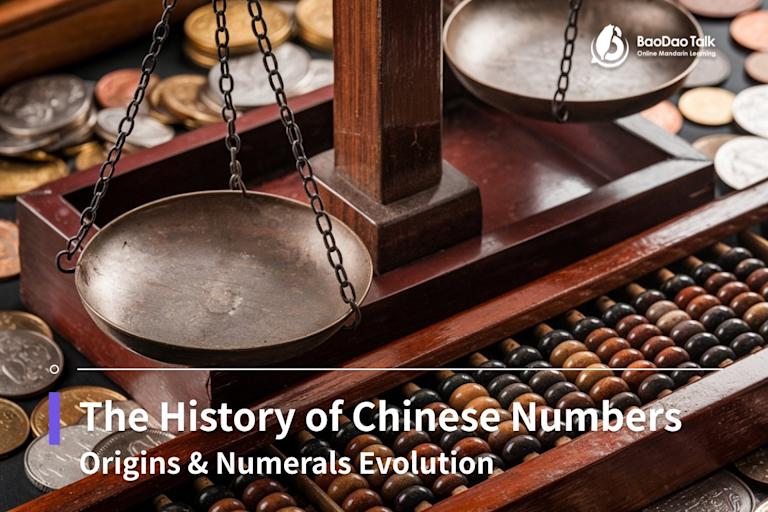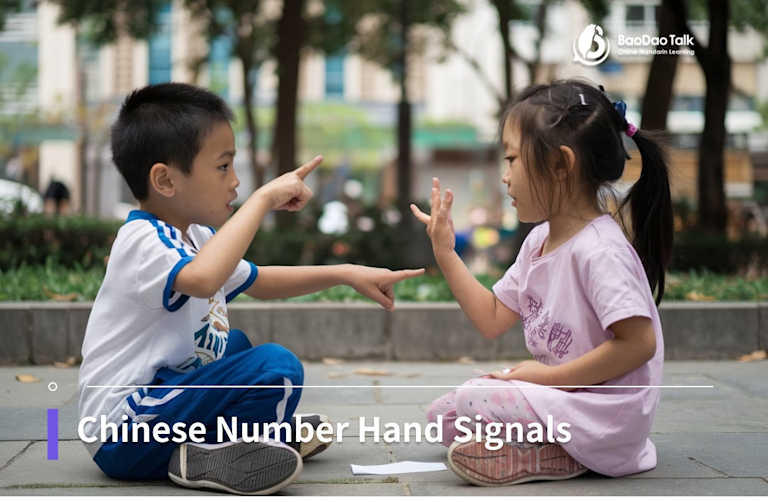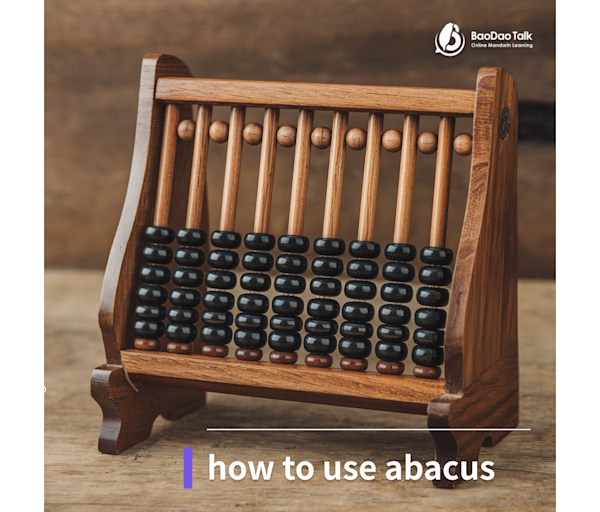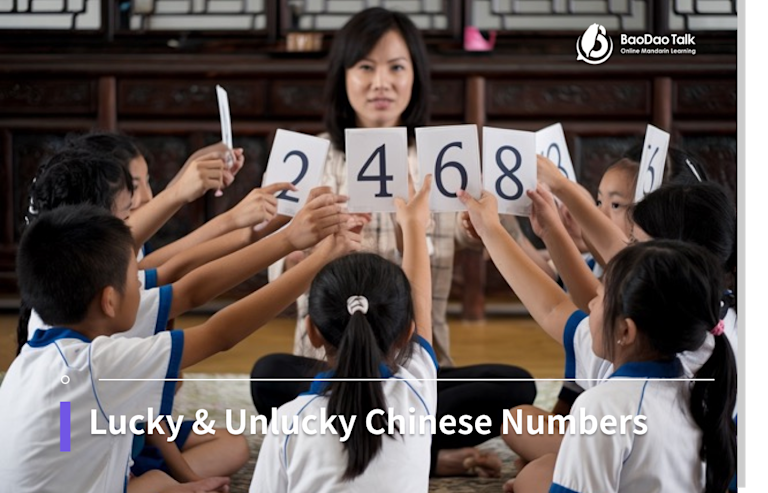BaoDao Talk Blog
2025-02-24updated
Decode Top 38 Chinese Symbols with Meanings & Cultural Importance
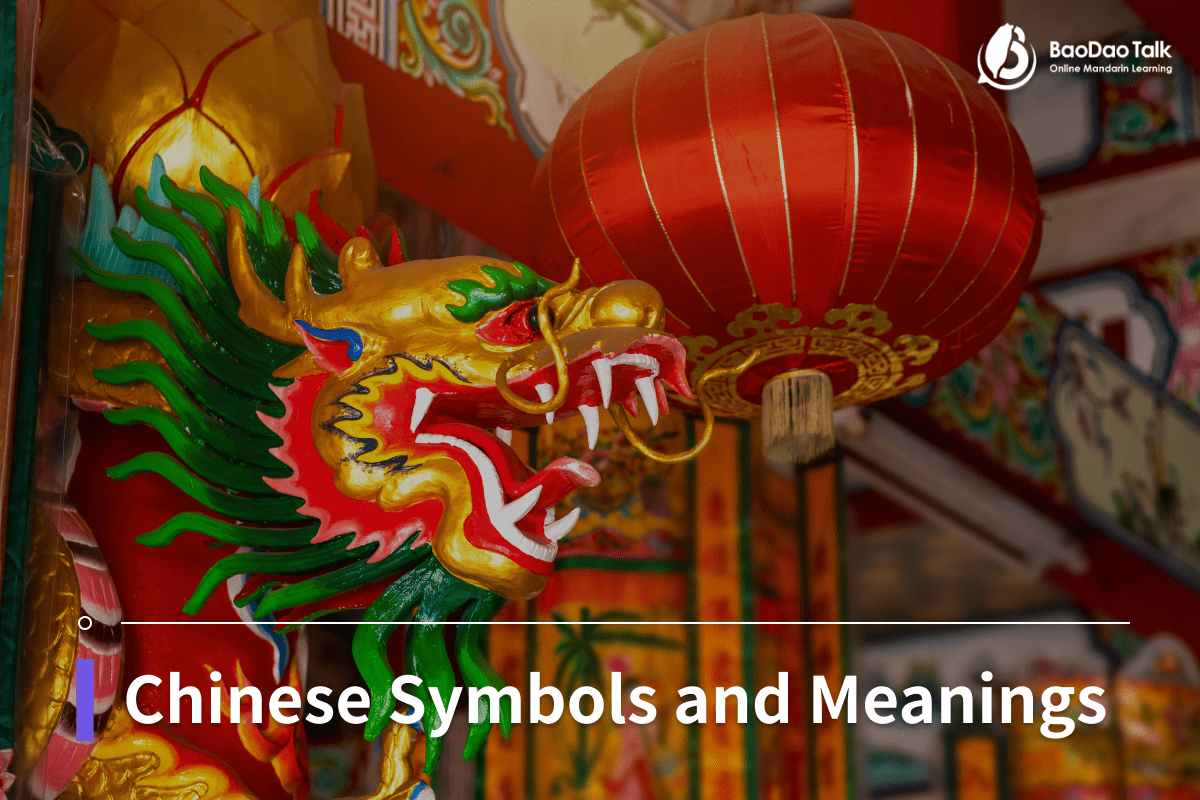
# Learning Mandarin
Unlock a deeper understanding of ancient Chinese symbols and meanings. Explore the dragons, flowers, and more symbols in our comprehensive guide.
Quick Navigation
Why are Chinese Symbols Important?
Chinese symbols hold deep cultural significance, reflecting the rich tapestry of mythology, religion, philosophy, and social customs.
They convey profound meanings, such as the dragon representing power and strength in mythology and the phoenix symbolizing rebirth in both mythology and religion. Philosophical concepts, like yin-yang, embody the balance of opposites in nature. Social customs, such as using the double happiness symbol (囍) in weddings, emphasize joy and prosperity.
These symbols are integral to understanding Chinese heritage, beliefs, and values, providing a window into the ancient and enduring aspects of Chinese civilization.
Significant Chinese Symbols and Their Meanings
Here, we explain the profound meanings behind some of the most iconic and ancient Chinese symbols. From plants and animals to nature and philosophical concepts, let’s look at these captivating symbols and the cultural richness they embody.
Plants and Flowers
Plants have always embodied rich symbolic meanings in Chinese culture. Throughout history, people have drawn parallels between certain characteristics, postures, and colors of plants to evoke different feelings and convey specific ideas or moods. These symbolic meanings also reflect Chinese philosophical concepts and values.
Lotus (荷 hé, 蓮 lian)
The lotus (荷, hé; 蓮, lián) symbolizes purity, enlightenment, and rebirth. Despite growing in muddy water, it emerges clean and beautiful, representing the ability to remain unstained by one’s environment. This characteristic is highly regarded in Buddhist symbolism, where the lotus signifies spiritual awakening and purity of the heart and mind. It is also a symbol of summer and fruitfulness.

Plum Blossom (梅花 méi huā)
The plum blossom (梅花, méi huā) represents perseverance and hope, as it blooms vibrantly in the harsh winter snow. It symbolizes resilience, endurance, and beauty in adversity. The plum blossom is praised for its four virtues: "When it buds, it signifies the beginning of the spring; when it blooms, it represents smooth progress; when it bears fruit, it symbolizes prosperity; and when it ripens, it stands for steadfastness and purity.”
Chrysanthemum (菊花 jú huā)
 Chrysanthemums (菊花, jú huā) symbolize longevity, rejuvenation, and the beauty of aging. They represent nobility and elegance in Chinese culture. Táo Yuānmíng (陶淵明), a poet frustrated with his official career, loved chrysanthemums for their resilience and simplicity, reflecting his values of humility and independence. In his poetry, the flower symbolizes his desire for a pure, unpretentious life away from the corrupt court. Also, it is traditional to drink chrysanthemum wine during the Double Ninth Festival.
Chrysanthemums (菊花, jú huā) symbolize longevity, rejuvenation, and the beauty of aging. They represent nobility and elegance in Chinese culture. Táo Yuānmíng (陶淵明), a poet frustrated with his official career, loved chrysanthemums for their resilience and simplicity, reflecting his values of humility and independence. In his poetry, the flower symbolizes his desire for a pure, unpretentious life away from the corrupt court. Also, it is traditional to drink chrysanthemum wine during the Double Ninth Festival.
Orchid (蘭花 lán huā)
The orchid (蘭花, lán huā) symbolizes elegance, nobility, and friendship. Known for its delicate beauty and sweet fragrance, the orchid is a sign of refined taste and cultured sophistication. In Confucian tradition, it represents integrity, modesty, and loyalty. Orchids are often given as gifts to convey respect and admiration.
Narcissus (水仙 shuǐ xiān)
Narcissus (水仙, shuǐ xiān) flowers symbolize good fortune and prosperity. They bloom around the Chinese New Year, making them a sign of new beginnings and good luck for the year ahead. The graceful and pure appearance of the flower also represents purity and elegance. Narcissus is a popular plant during festive seasons since it is believed to bring wealth and good fortune.
Peach (桃 táo)
The peach (桃, táo) is a symbol of longevity and immortality. In Chinese mythology, the peaches of immortality are said to give long life to those who eat them. Peach blossoms are also associated with love and romance, often seen during the springtime. The fruit and its blossoms are widely used in Chinese art to convey wishes for a long and healthy life.
Peony (牡丹 mǔdān)
The peony (牡丹, mǔdān), known as the “King of the Flowers,” symbolizes wealth, honor, and beauty as they are celebrated for their large, lush blooms and are believed to bring prosperity and good fortune. It is also often associated with royalty and high social status. They are a popular motif in Chinese art and are often used in decorations for weddings and festive occasions.

Hibiscus (木芙蓉 mù fú róng)
Hibiscus (木芙蓉, mù fú róng) flowers symbolize fame, wealth, and glory. Their bright and vibrant blooms are associated with beauty and the fleeting nature of fame. In Chinese culture, the hibiscus also represents harvesting and the accomplishment of goals. It is a popular decorative element during autumn celebrations, especially the Mid-Autumn Festival, symbolizing hope, prosperity, and success.
Pomegranate (石榴 shí liú)
 The pomegranate (石榴, shí liú) symbolizes fertility, abundance, and prosperity. Its many seeds are seen as a sign of numerous offspring and a large, happy family. The fruit is often used in traditional art to convey wishes for fertility and a prosperous future.
The pomegranate (石榴, shí liú) symbolizes fertility, abundance, and prosperity. Its many seeds are seen as a sign of numerous offspring and a large, happy family. The fruit is often used in traditional art to convey wishes for fertility and a prosperous future.
Lily (百合 bǎi hé)
Lilies (百合, bǎi hé) symbolize purity, unity, and the wish for a happy union. Their elegant blooms are often used in weddings and other celebrations to represent 100 years of harmonious union. The homophony of "百合" (bǎi hé) with "百年好合" (bǎi nián hǎo hé), meaning "100 years of harmonious union," makes it especially popular in wedding decorations and gifts.
Pine (松 sōng)
The pine tree (松, sōng) symbolizes longevity, steadfastness, and resilience. Known for its ability to withstand harsh conditions, the pine is a common symbol of perseverance and longevity in Chinese culture. It is often depicted in art and literature alongside other symbols of longevity, such as cranes and peaches.
In Taoist mythology, pine also symbolizes longevity and immortality as the king of all plants. Its resin, derived from ancient pines, is believed to transform into Fu Ling (茯苓), granting immortality to those who consume it.
Bamboo (竹 zhú)
Bamboo (竹, zhú) symbolizes flexibility, resilience, and uprightness. Its ability to bend without breaking in strong winds makes it a symbol of endurance and adaptability. Bamboo is also associated with integrity and simplicity. It is commonly used in Chinese art and literature to represent moral strength and resilience in the face of adversity.
 Photo by zoo monkey on Unsplash
Photo by zoo monkey on Unsplash
Animals
Besides plants, animals also frequently appear as symbols in Chinese culture. Beyond common everyday animals, we can also see mythical creatures like dragons and phoenixes which hold special meanings, representing unique cultural and philosophical concepts.
Dragon (龍 lóng)
 Photo by Winston Chen on Unsplash
Photo by Winston Chen on Unsplash
The dragon (龍, lóng) symbolizes power, strength, and good fortune. It is considered a divine creature that brings prosperity and good luck. In Chinese mythology, dragons are revered as benevolent beings that control water and weather, embodying the yang principle of strength and activity. Also, the dragon is also seen as the symbol of the emperor. Different styles of dragons are often used in celebrations and decorations to attract good luck and success.
Phoenix (鳳凰 fèng huáng)
The phoenix (鳳凰, fèng huáng) symbolizes rebirth, immortality, and grace. It represents the yin principle and is often paired with the dragon to symbolize harmony and balance. The phoenix is believed to rise from its ashes, making it a symbol of resilience and renewal. It is also associated with the empress in Chinese culture, representing beauty and virtue.
Lion (獅 shī)
The lion (獅, shī) symbolizes strength, courage, and protection. Stone lion statues are commonly placed at the entrances of buildings, such as temples and palaces, to ward off evil spirits. In Chinese culture, the lion dance is performed during festivals to bring good luck and drive away bad fortune.
Crane (鶴 hè)
The crane (鶴, hè) symbolizes longevity, peace, and fidelity. Known for their graceful movements, cranes are often depicted in art and poetry to convey wishes for a long and peaceful life. They are also associated with wisdom and are believed to carry souls to the heavens. The idiom 駕鶴歸西 (jià hè guī xī), meaning riding the crane to the west, is a poetic euphemism for passing away. It symbolizes the soul's peaceful journey to the Western paradise, highlighting the crane's role in immortality and tranquility.
Panda (熊貓 xióng māo)
The panda (熊貓, xióng māo) symbolizes peace, friendship, and harmony. Known for its gentle nature, the panda is an emblem of tranquility and goodwill. The panda is a beloved national treasure in China and is often used to represent Chinese culture and diplomatic figures in modern days.
Bat (蝠 fú)
The bat (蝠, fú) symbolizes good fortune and happiness. The pronunciation of "蝠" (fú) is similar to "福" (fú), meaning good luck or blessing. Bats are often depicted in Chinese art and decorations to convey wishes for prosperity and happiness. They are commonly seen in patterns and designs on the walls or windows of ancient buildings.
Elephant (象 xiàng)
The elephant (象, xiàng) symbolizes wisdom, strength, and good luck. In Chinese culture, the elephant is associated with royalty and dignity. Its large size and gentle nature make it a symbol of power and peace. Its symbolic imagery is also influenced by Buddhism throughout Chinese history. Elephants are often depicted in art and architecture to bring good fortune and to represent stability, holiness, and wisdom.
Fish (魚 yú)
The fish (魚, yú) symbolizes abundance and prosperity. The pronunciation of "魚" (yú) sounds like "餘" (yú), meaning surplus or abundance. Fish are commonly used in decorations and paintings to wish for wealth and plentiful resources. During the Chinese New Year, fish dishes are prepared to symbolize a prosperous year ahead.
Crab (蟹 xiè)
The crab (蟹, xiè) symbolizes prosperity and success. Its ability to move in all directions with eight legs is seen as a sign of adaptability and resourcefulness. Crabs are often featured in Chinese cuisine and art to represent a successful and prosperous life. In terms of the name for crabs, the character "蟹" (xiè) sounds like "諧" (xié). In many traditional handicrafts, themes of crabs and lotus (荷 hé) flowers are often seen together, symbolizing harmony (和 hé) and happiness (諧 xié).
Carp (鯉魚 lǐ yú)
 The carp (鯉魚, lǐ yú) symbolizes perseverance, strength, and success. In Chinese culture, the carp’s ability to swim upstream and transform into a dragon upon reaching the Dragon Gate symbolizes overcoming adversity and achieving greatness. Therefore, they are associated with educational or career success and are often used in motifs to encourage major achievement.
The carp (鯉魚, lǐ yú) symbolizes perseverance, strength, and success. In Chinese culture, the carp’s ability to swim upstream and transform into a dragon upon reaching the Dragon Gate symbolizes overcoming adversity and achieving greatness. Therefore, they are associated with educational or career success and are often used in motifs to encourage major achievement.
Goldfish (金魚 jīn yú)
Goldfish (金魚, jīn yú) symbolize wealth, luck, and prosperity. Their golden color and vibrant appearance make them a popular symbol of good fortune. Also, goldfish (金魚 jīn yú) is a homophone for "gold surplus" (黃金有餘 huáng jīn yǒu yú); therefore, they are considered appropriate gifts for weddings. They are often kept in homes and businesses to attract wealth and positive energy. They are also featured in Chinese New Year decorations to symbolize abundance and good luck for the coming year.

The Chinese Zodiac (十二生肖 shí èr shēng xiào)
The Chinese Zodiac (十二生肖, shí èr shēng xiào) consists of twelve animal signs, each representing a year in a twelve-year cycle. Each animal has its own symbolic meanings and characteristics, influencing the personality and fate of individuals born in their respective years.

- Rat (鼠 shǔ): Intelligent and resourceful, rats are seen as quick-witted and adaptable. They are also associated with wealth and surplus.
- Ox (牛 niú): Diligent and dependable, oxen symbolize strength, reliability, and hard work. They are often seen as patient and methodical.
- Tiger (虎 hǔ): Tigers are brave and confident, symbolizing courage and power. They are known for their competitive nature and charm.
- Rabbit (兔 tù): Rabbits are gentle and kind, symbolizing peace and elegance. They are often seen as compassionate and artistic.
- Dragon (龍 lóng): Dragons are powerful and ambitious, representing authority and good fortune. They are charismatic and energetic.
- Snake (蛇 shé): Snakes are wise and enigmatic, symbolizing intelligence and sophistication. They are often seen as intuitive and refined.
- Horse (馬 mǎ): Horses are energetic and free-spirited, symbolizing independence and strength. They are known for their enthusiasm and resilience.
- Goat (羊 yáng): Goats are gentle and calm, representing peace and creativity. They are often seen as kind-hearted and artistic.
- Monkey (猴 hóu): Monkeys are clever and lively, symbolizing intelligence and curiosity. They are known for their wit and versatility.
- Rooster (雞 jī): Roosters are observant and hardworking, representing punctuality and ambition. They are often seen as confident and meticulous.
- Dog (狗 gǒu): Dogs are loyal and honest, symbolizing loyalty and sincerity. They are known for their trustworthiness and dedication.
- Pig (豬 zhū): Pigs are generous and compassionate, representing wealth and good fortune. They are often seen as diligent and kind-hearted.
Elements of Nature
Resources found in nature also become significant symbols in Chinese culture. The well-known concept of yin and yang and the Five Elements represent ancient China's unique philosophical perspectives and modes of thinking, reflecting balance, harmony, and the interconnectedness of opposites.
Clouds (雲 yún)
Clouds (雲, yún) symbolize transformation, divine presence, and good fortune. They are often depicted in Chinese art as auspicious symbols, representing the connection between heaven and earth, or the omen of peace. Clouds also signify the arrival of good news and positive changes. Their ever-changing forms symbolize the impermanence and beauty of life.
Jade (玉 yù)
Jade (玉, yù) is highly valued in Chinese culture for its beauty and purity, often symbolizing nobility, integrity, and moral perfection. The idiom "冰清玉潔" (bīng qīng yù jié), which translates to "as pure as ice and clean as jade," highlights the association of jade with purity and flawlessness. This idiom is used to describe a person of unblemished character, emphasizing qualities such as honesty, integrity, and virtuousness. Jade objects, from intricate carvings to elegant jewelry, are cherished for their aesthetic beauty and their embodiment of these esteemed traits.
The Five Elements (五行 wǔ xíng)
The Five Elements (五行, wǔ xíng) – Wood (木), Fire (火), Earth (土), Metal (金), and Water (水) – represent the fundamental forces of nature and their interrelationships. These elements are used to explain natural phenomena, human organs, properties of herbal medicine, or even the changes of political regimes, and ultimately, the cosmic principles in Chinese philosophy. Each element has its own symbolic meanings and associations, influencing various aspects of life and the universe.

Yin and Yang (陰陽 yīn yáng)
Yin and Yang (陰陽, yīn yáng) symbolize the duality and harmony of opposite forces in the universe. Yin represents the feminine, passive, and dark aspects, while Yang represents the masculine, active, and light aspects. Together, they embody balance and interconnectedness. This concept is central to Chinese philosophy and medicine, emphasizing the importance of maintaining harmony in all aspects of life.
In ancient times, numbers were also divided into yin and yang. Odd numbers 1, 3, 5, 7, and 9 were considered yang, while even numbers 2, 4, 6, 8, and 10 were considered yin. This classification was originally related to divination. Among the yang numbers, 9 is the highest, and 5 is central, symbolizing balance. Therefore, the emperor was referred to as "the Supreme of Nine and Five."

Other Iconic Symbols
Beyond plants, animals, and elements of nature, other iconic symbols hold significant importance in Chinese culture. These symbols often reflect unique aspects of human aspirations and values, such as the pursuit of fortune, longevity, and happiness.

Wealth (財 cái)
The symbol for wealth (財, cái) represents financial prosperity and material abundance. Commonly seen in decorations and charms, it is often accompanied by the phrase "招財進寶" (zhāo cái jìn bǎo), meaning "attract wealth and bring in treasures." Objects like golden ingots, coins, and wealth gods are used to invoke financial success and security.
Fortune/Good Luck (福 fú)
The symbol for fortune or good luck (福, fú) is widely used in Chinese culture to bring happiness and blessings. It is often displayed upside down at the entrance of homes on New Year scrolls, as the word "倒" (dào) sounds like "到" (dào), meaning "arrive," symbolizing that good luck is arriving. It is a common decoration during the Chinese New Year.
Love (愛 ài)
The character for love (愛, ài) signifies deep affection and romantic love. In traditional Chinese, the character contains a heart (心) at its center, symbolizing that love comes from the heart. This symbol emphasizes the importance of genuine feelings and emotional connection.
Double Joy (囍 xǐ)
The double joy symbol (囍, xǐ) is commonly used in wedding decorations, representing happiness and marital bliss. This character is simply two characters of joy (喜, xǐ) written side by side, meaning double the amount of joy. The symbol is often featured in red, a color associated with joy and good fortune, to wish the couple a joyous and prosperous union.
Longevity (壽 shòu)
The character for longevity (壽, shòu) symbolizes a long and healthy life. It is frequently used in birthday celebrations for the elderly and in decorations to wish for a long lifespan. Objects like peaches, cranes, noodles, and pine trees are associated with this symbol, as they are believed to bring longevity and good health.
Courage (勇敢 yǒng gǎn)
The character for courage (勇敢, yǒng gǎn) represents bravery and valor. It is often associated with heroic deeds and the ability to face challenges fearlessly. This symbol is used to encourage people to be bold and resilient in the face of adversity. It is a common motif in martial arts and warrior cultures.
Strength and Power (力 lì)
The character for strength (力, lì) symbolizes physical power, energy, and determination. It is often used to represent the ability to overcome obstacles and achieve goals through hard work and perseverance. This symbol is common in motivational contexts, encouraging individuals to harness their inner power, strength, and resilience.
Calligraphy (書法 shū fǎ)
Calligraphy (書法, shū fǎ) is the art of beautiful writing in Chinese culture. It represents the harmony of form and meaning, combining aesthetic appeal with cultural significance. Calligraphy is highly revered as an expression of intellectual and artistic refinement. It is used in various forms of art, literature, and decoration to convey profound messages and values.
Tea Art (茶道 chá dào)
Tea art (茶道, chá dào) symbolizes the cultural significance of tea in Chinese tradition. It represents harmony, respect, and tranquility. The practice of preparing and drinking tea is a form of meditation and social interaction, reflecting the values of simplicity and mindfulness. Tea art is an integral part of Chinese hospitality and cultural heritage.
Vocabulary Table
| Chinese Character | Pronunciation | English Translation | Symbolic Meaning |
|---|---|---|---|
| 荷, 蓮 | hé, lián | Lotus | Purity, enlightenment, rebirth |
| 梅花 | méi huā | Plum Blossom | Perseverance, hope |
| 菊花 | jú huā | Chrysanthemum | Longevity, rejuvenation |
| 蘭花 | lán huā | Orchid | Elegance, nobility, friendship |
| 水仙 | shuǐ xiān | Narcissus | Good fortune, prosperity |
| 桃 | táo | Peach | Longevity, immortality |
| 牡丹 | mǔ dān | Peony | Wealth, honor, beauty |
| 木芙蓉 | mù fú róng | Hibiscus | Fame, wealth, glory |
| 石榴 | shí liú | Pomegranate | Fertility, abundance |
| 百合 | bǎi hé | Lily | Purity, unity |
| 松 | sōng | Pine | Longevity, resilience |
| 竹 | zhú | Bamboo | Flexibility, resilience |
| 龍 | lóng | Dragon | Power, strength, good fortune |
| 鳳凰 | fèng huáng | Phoenix | Rebirth, immortality |
| 獅 | shī | Lion | Strength, courage, protection |
| 鶴 | hè | Crane | Longevity, peace, fidelity |
| 熊貓 | xióng māo | Panda | Peace, friendship, harmony |
| 蝠 | fú | Bat | Good fortune, happiness |
| 象 | xiàng | Elephant | Wisdom, strength, good luck |
| 魚 | yú | Fish | Abundance, prosperity |
| 蟹 | xiè | Crab | Prosperity, success |
| 鯉魚 | lǐ yú | Carp | Perseverance, Success |
| 金魚 | jīn yú | Goldfish | Wealth, luck |
| 十二生肖 | shí èr shēng xiào | Chinese Zodiac | Characteristics and fate |
| 雲 | yún | Clouds | Transformation, good fortune |
| 玉 | yù | Jade | Purity, integrity |
| 五行 | wǔ xíng | Five Elements | Natural forces, cosmic principles |
| 陰陽 | yīn yáng | Yin and Yang | Balance, harmony |
| 財 | cái | Wealth | Financial prosperity |
| 福 | fú | Fortune | Good luck, happiness |
| 愛 | ài | Love | Affection |
| 囍 | xǐ | Double Joy | Marital bliss |
| 壽 | shòu | Longevity | Long life |
| 勇敢 | yǒng gǎn | Courage | Bravery |
| 力 | lì | Strength | Power, determination |
| 書法 | shū fǎ | Calligraphy | Art of writing |
| 茶道 | chá dào | Tea Art | Cultural significance of tea |
Where Can These Chinese Symbols Be Found In Daily?
Chinese symbols have been essential to art, architecture, literature, and communication since ancient times. They are evident in traditional paintings, intricate carvings on temples, classical poems, and ancient texts, and so are in pop culture.
Symbols like the yin-yang appear in modern movies, representing balance and harmony. For example, in Kung Fu Panda 2, a mystical mirror of Yin and Yang can show the good and evil nature of beings. Not to mention that the symbol of the dragon has always been present, like the character of Mushu in Mulan. Furthermore, companies like Panda Express use the panda symbol to represent Chinese cuisine, drawing on the cultural significance of the animal.
These symbols continue to influence modern design, fashion, and media, acting as a bridge between past and present. Understanding Chinese symbols enriches one's appreciation of their deep meanings and the culture they represent. Learning Chinese symbols fosters a deeper connection to Chinese heritage and enhances cultural insight.
Learn More About Chinese Symbols at BaoDao Talk
Chinese symbols offer a fascinating glimpse into the rich tapestry of Chinese culture and history. From the intricate strokes of pictograms to the profound meanings they convey, these symbols are more than just characters—they are a bridge to understanding the values, beliefs, and traditions.
BaoDao Talk is an online platform that offers immersive learning experiences to help you understand Taiwanese culture and learn Mandarin. With personalized learning plans, experienced teachers, and interactive lessons, we make mastering Traditional Chinese engaging and accessible. Discover the rich world of Chinese symbols and enhance your language skills with BaoDao Talk now!
Read More:
- Decode Top 38 Chinese Symbols with Meanings & Cultural Importance - BaoDao Talk
- 14 Chinese Festivals: How They’re Celebrated Traditionally - BaoDao Talk
- 35+ Famous Chinese Idioms to Learn with Study Tips - BaoDao Talk
- Chinese Number Hand Signals and Counting: Complete Guide
- The Chinese Abacus Explained: Counting, Multiplication & More - BaoDao Talk
- Chinese Lucky & Unlucky Numbers: the Cultural Impact Explained
Share to:
 Photo by
Photo by  Photo by
Photo by 